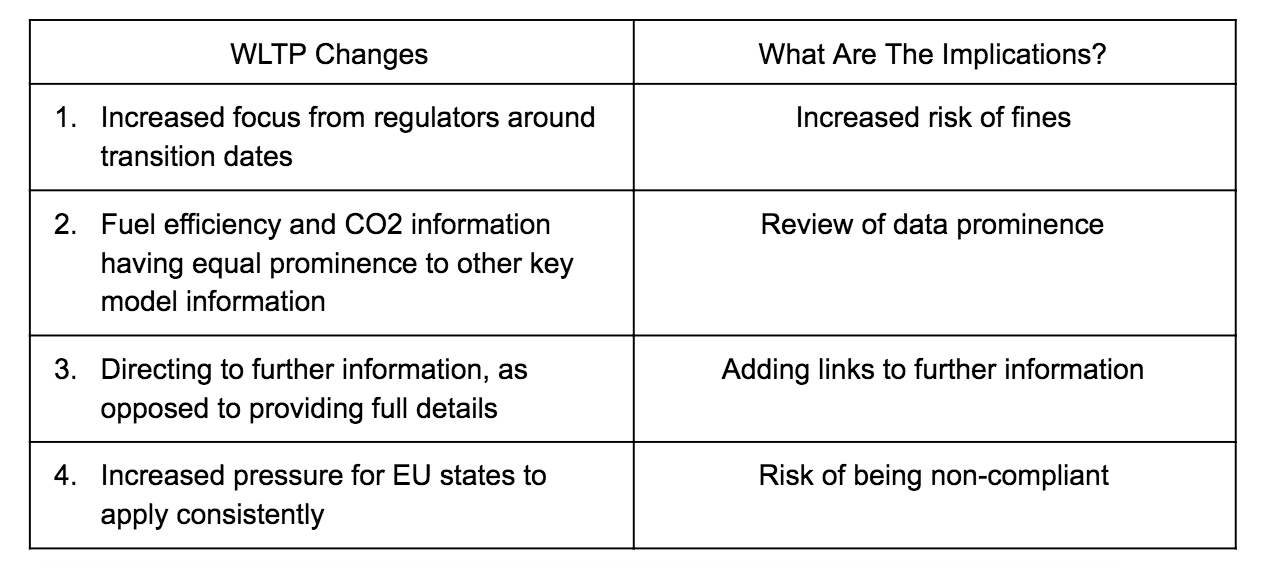From some recent experiences here at StoryStream, we’d like to share some insights that, if managed well now, will save you a lot of effort and expense later down the line.
Emissions labelling requirements have been around for point of sale for a long time and we all know about the WLTP (Worldwide Harmonised Light Vehicle Test Procedure) regulations that came into force in 2018. However, more is on the horizon and it will be a challenging and potentially punitive time for compliance.
Consumer awareness is at the forefront of this regulation and ultimately Government will want this information to be noticeably sign-posted on all media.
How and where content is labelled is key here. Under directives, product information must be provided for the consumption of energy and other resources by energy-related products – vehicles in our case. And all brands do this on their website pages, mostly as a footer.
There are key indicators that more severe requirements are on the way.
What’s happening in Germany?
Vehicle labelling directives apply to all EU member states and Germany are further along with implementation with more consistent adherence and penalties for non-compliance.
We are seeing frequent litigation of vehicle brands based in Germany for breach of regulation for not directly or not (by interpretation) correctly labelling content items displayed for sales or promotional purpose. The legal organisations pursuing these brands are typically not demanding vast sums in each instance. But balancing this against the time, cost and potential negative publicity of legal action means that most matters have been settled out of court.
These individual actions quickly add up to significant cost and are a damaging distraction for marketing and digital teams.

Where next?
The implementation of the vehicle labelling directive is the responsibility of each country. If we take the UK as an example, it differs from Germany in that currently, direct labelling requirements do not apply to sales made via the internet, promotional websites or other electronic channels. However, the guidance does state that Government would expect similar labelling approaches to be followed.
There is an awareness that more consumers are making their buying decision without seeing the vehicle at a point of sale and therefore, more will be done to escalate energy consumption and emissions awareness.
What is the impact and how can AI and smart technology help?
What does this mean for marketeers? There are two key impacts to look at now.
Firstly, processes have to be put in place to match each content item stored in systems with their relevant and up-to-date energy information. This is necessary because when a piece of content is published in any channel (e.g. web page, email, social media), it must retain and display its current energy information. It won’t be sufficient to only display an information footer. Advanced AI content analysis, tagging and smart workflows are going a long way to help solve this issue.
Secondly, how the labelling is displayed, with the correct data and information links, is important. We want to be compliant, yet still maximise the visual effect of the content. Ideally, labelling should always clear and visible, without impinging on the content, and include clickable links for further information.
When is this likely to affect me?
The full transition to WLTP happens in September 2019 when all vehicles on sale will have to be labelled with WLTP test data. We expect this to be a point when more stringent labelling requirements will start.
The reason for this is that the changes impact not just what information you must display, but also how and where. Some key points to look out for:

All digital content including website, email and social media are expected to be subject to greater scrutiny.
What is StoryStream doing?
At StoryStream we help automotive brands grow through high performing content across their sales and marketing channels.
We make it our business to understand the challenges that come with content marketing and we develop innovative solutions to deliver growth and minimise compliance risk.
We are passionate about getting value from great content and if you’d like to talk about energy and emissions labelling and minimising risk, or anything else content related, we’d welcome a discussion.



